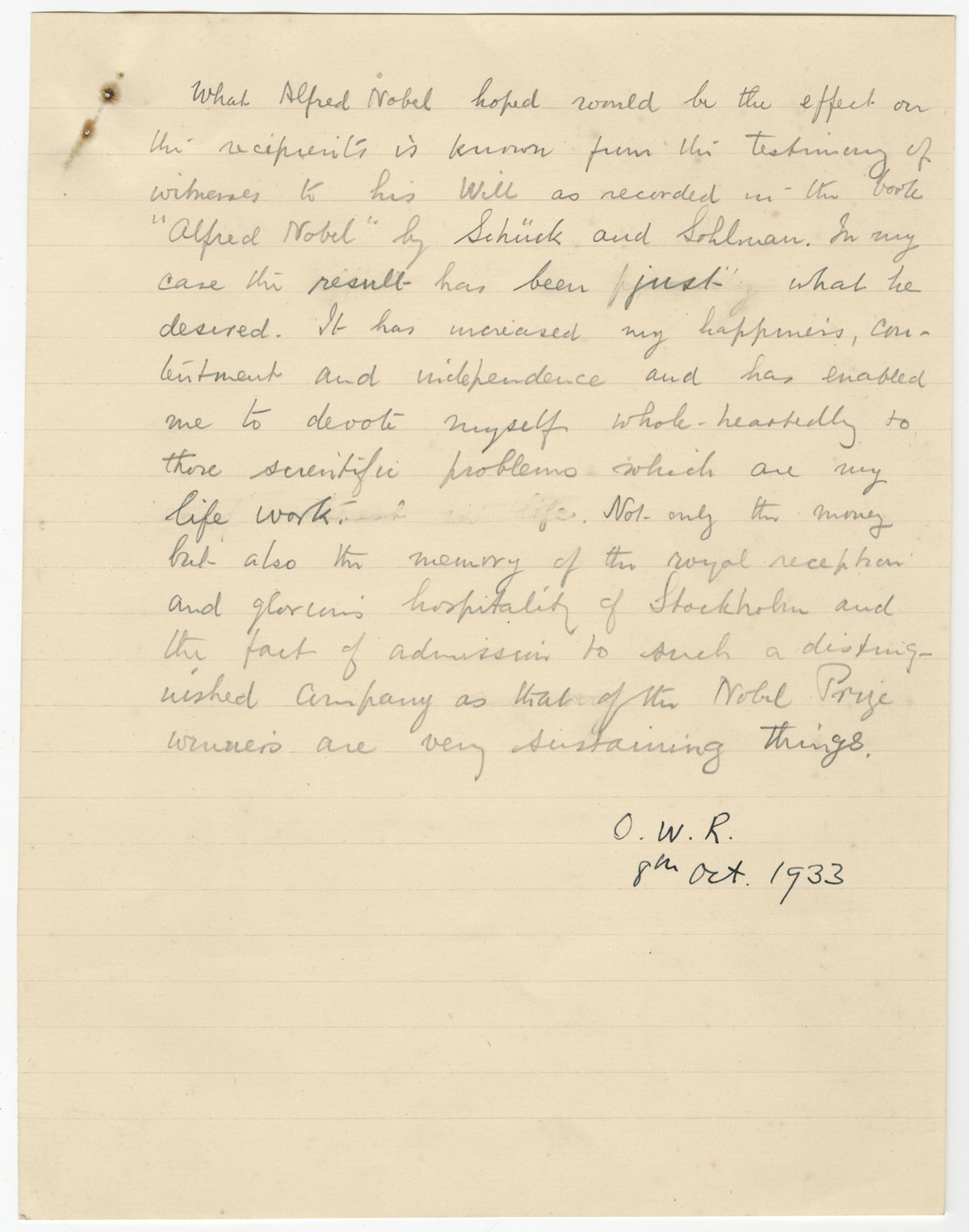
With the generous support of a grant from the History Programs, American Institute of Physics, the Ransom Center has created a new online finding aid for the papers of English physicist Owen W. Richardson (1879–1959). The papers were originally processed during the 1960s and described on more than 8,000 catalog cards. Enhanced collection housing was also part of the project, improving long-term preservation of the materials.
Recognized for his pioneering work on thermionics, Sir Owen Richardson was awarded the 1928 Nobel Prize in Physics for his work on the thermionic phenomenon and the discovery of the law named after him. He contributed to several branches of physics, including photoelectricity, spectroscopy, ultraviolet and X-ray radiation, the electron theory, and quantum theory.
Occupying more than 114 archival boxes, the materials contain his research notes and manuscripts of his writings, both published and unpublished; his outgoing and incoming correspondence; and manuscripts and proofs received from his colleagues. Richardson’s correspondence files include letters from many distinguished physicists (almost all Nobel laureates in physics prior to 1950 are represented), chemists, electrical engineers, mathematicians, and other scientists.
The papers also document Richardson’s work and professional activities at conferences and in scientific organizations, as well as his work for various government agencies, especially during World War I and the years preceding World War II.
Richardson’s papers are part of the history of science holdings at the Ransom Center, which include the Herschel family archive, first and significant editions of works by Galileo, first editions of most of Isaac Newton’s works, a collection of works by Charles Darwin, a large number of works by and about Albert Einstein, and the mathematical and logical studies of Charles Lutwidge Dodgson (better known as author Lewis Carroll).



